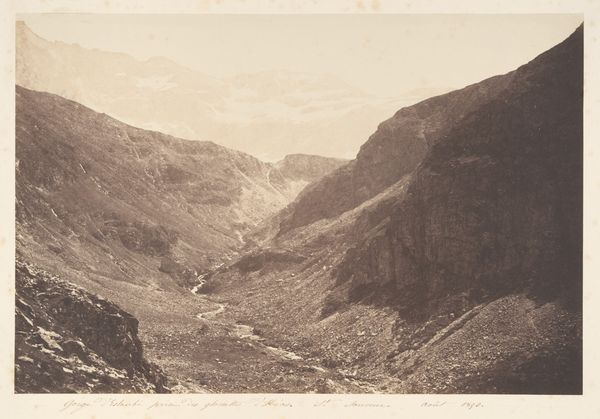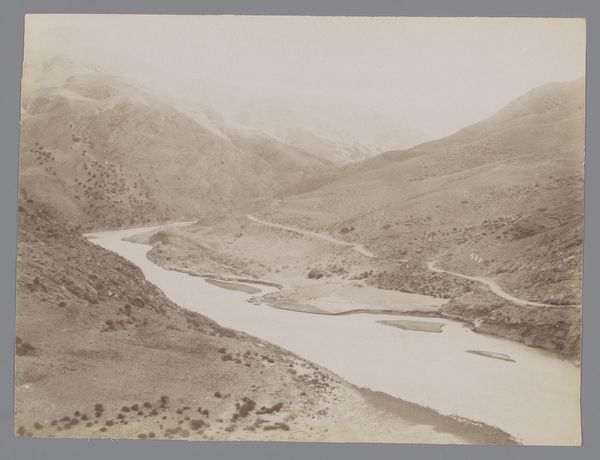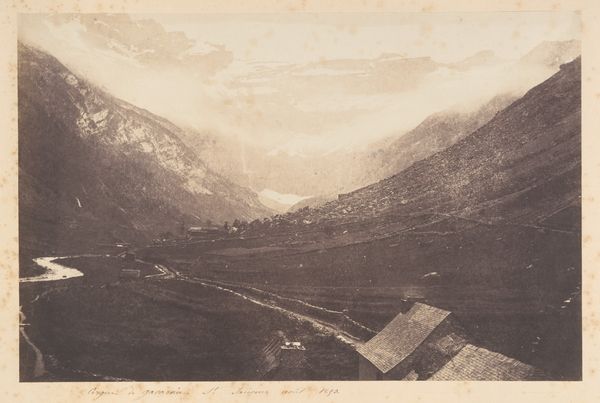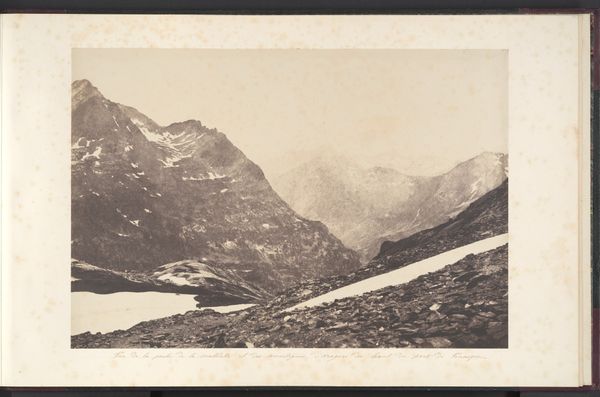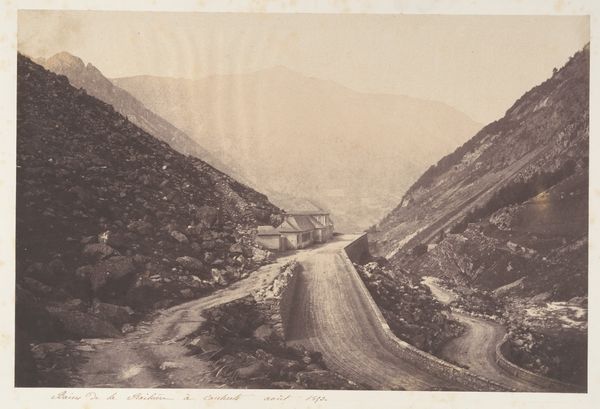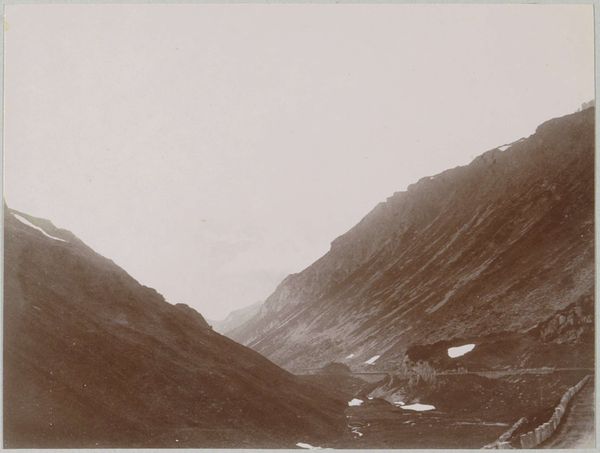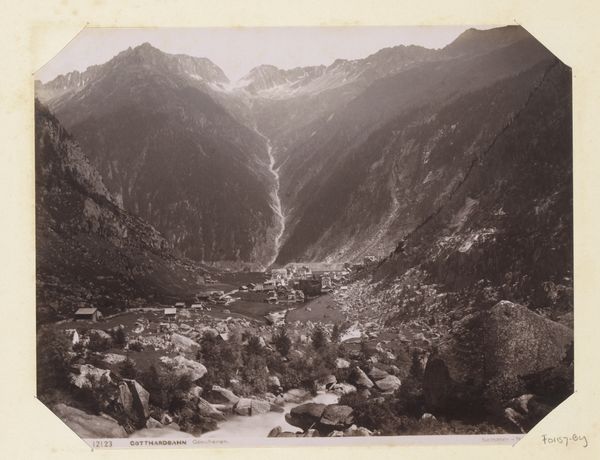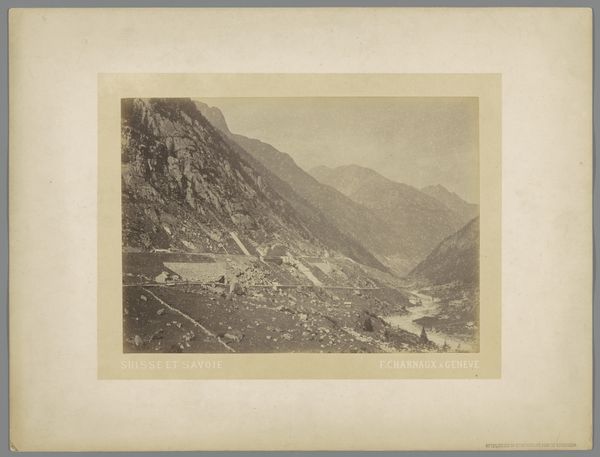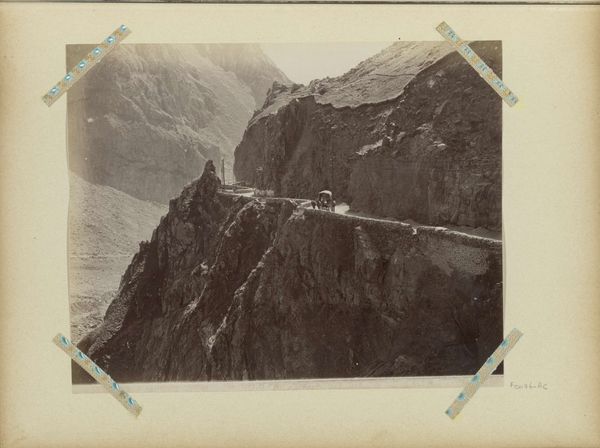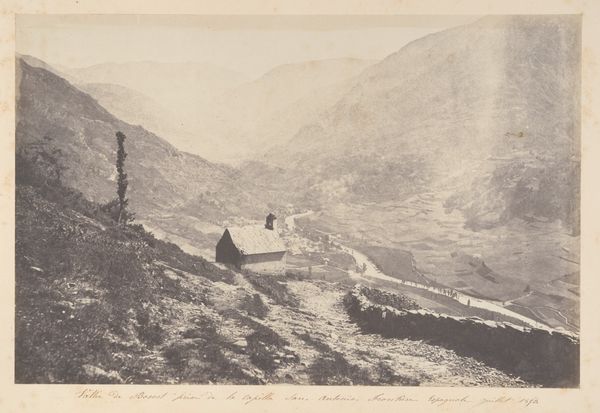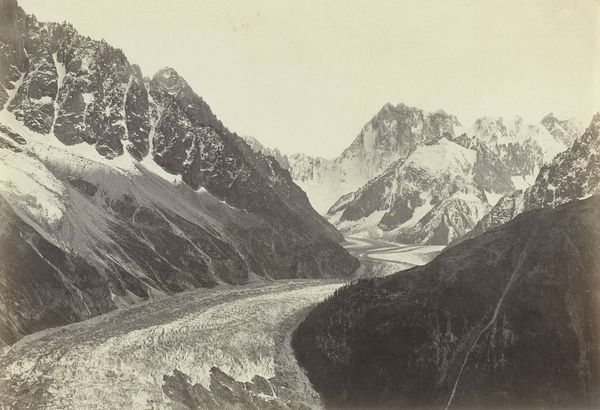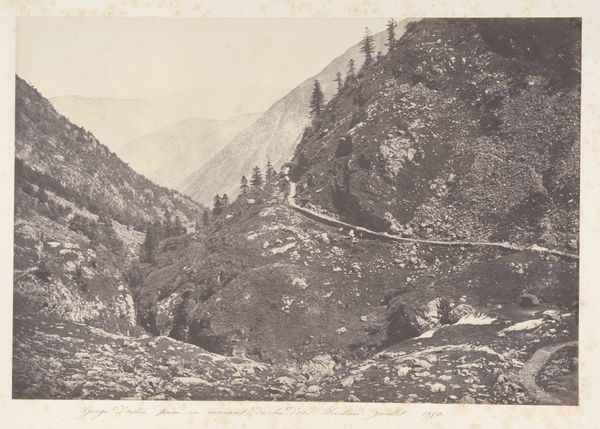
#
pencil drawn
#
natural shape and form
#
toned paper
#
light pencil work
#
pencil sketch
#
landscape
#
charcoal drawing
#
pencil drawing
#
mountain
#
pencil work
#
shading experimentation
#
watercolor
Dimensions: Image: 10 7/8 × 14 9/16 in. (27.6 × 37 cm) Sheet: 12 in. × 18 9/16 in. (30.5 × 47.2 cm)
Copyright: Public Domain
Curator: Joseph Vigier rendered this dramatic landscape, "Le chaos en allant à Gavarnie, St-Sauveur," in 1853. It's currently housed here at the Metropolitan Museum. Made with pencil and watercolor on toned paper, the piece truly captures a scene of almost primordial force. Editor: Primordial, definitely. My first impression is this sense of the sublime—of being dwarfed by this powerful, overwhelming natural landscape. It feels… chaotic, which I suppose aligns with the title. It evokes the vulnerability of the human figure in the face of nature's indifference. Curator: The title is very telling, isn't it? "Chaos." Gavarnie, in the Pyrenees, became a popular tourist destination around this time. But here, Vigier chooses to emphasize not its beauty but the somewhat terrifying grandeur one must traverse to reach it. Think about how landscape imagery was functioning then, too: the picturesque versus a growing taste for the sublime and authentic experiences. Editor: Yes, and it uses potent iconography. Mountains, of course, have always held significant symbolic weight. In many cultures, they represent aspiration, spiritual ascent, but also the potential for danger, and in many contexts a reminder of what constitutes "home" or the lack thereof. This rendition feels especially precarious because of the sharp angles, scree, and the way it uses that very deliberate light to add almost foreboding dimensionality. Curator: Precisely. The medium enhances this sense of drama too. Vigier’s choice of pencil and watercolor gives the scene a hazy quality, heightening the mysterious character of the mountain pass. His shading experiments lend incredible depth to the image. The lack of vibrant color also emphasizes the ruggedness, doesn’t it? Making the mountain itself the focal point, almost a metaphor for the overwhelming forces shaping the world. Editor: I think you’re right to emphasize the “forces shaping the world.” Looking at it more deeply now, there is a suggestion that if the mountain isn't careful, the water may indeed erode it away. It is this balance or precariousness that speaks most loudly. Curator: It’s interesting to consider Vigier’s work in the context of mid-19th century Romanticism and Realism; his image both celebrates the sublimity of nature and presents the difficult truth of the challenging terrain. Editor: Yes. I find this piece fascinating in terms of the emotional weight and the visual symbols involved, because it captures that liminal space. It is more than a landscape; it embodies challenge, potential, and also that creeping fear we all carry.
Comments
No comments
Be the first to comment and join the conversation on the ultimate creative platform.


